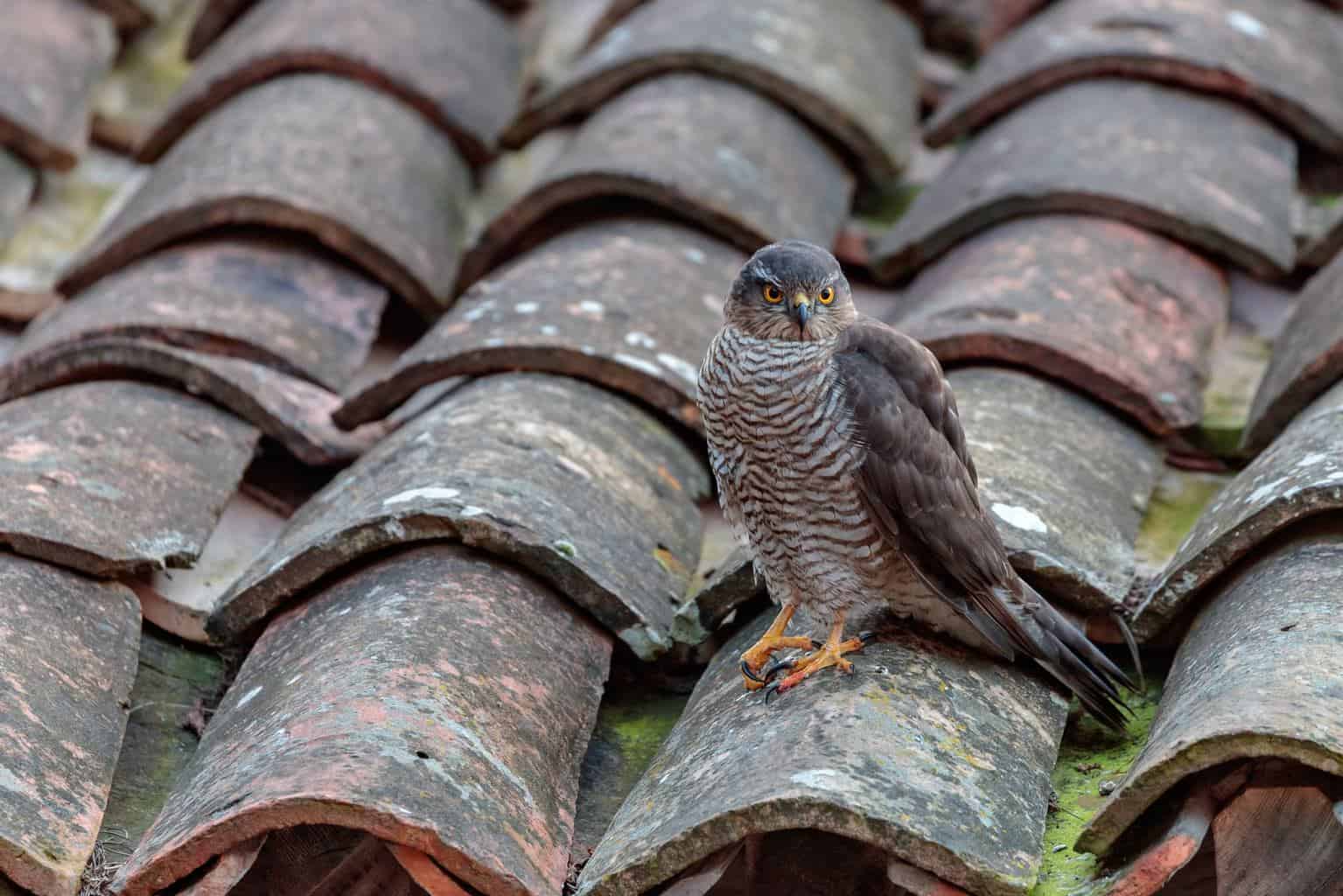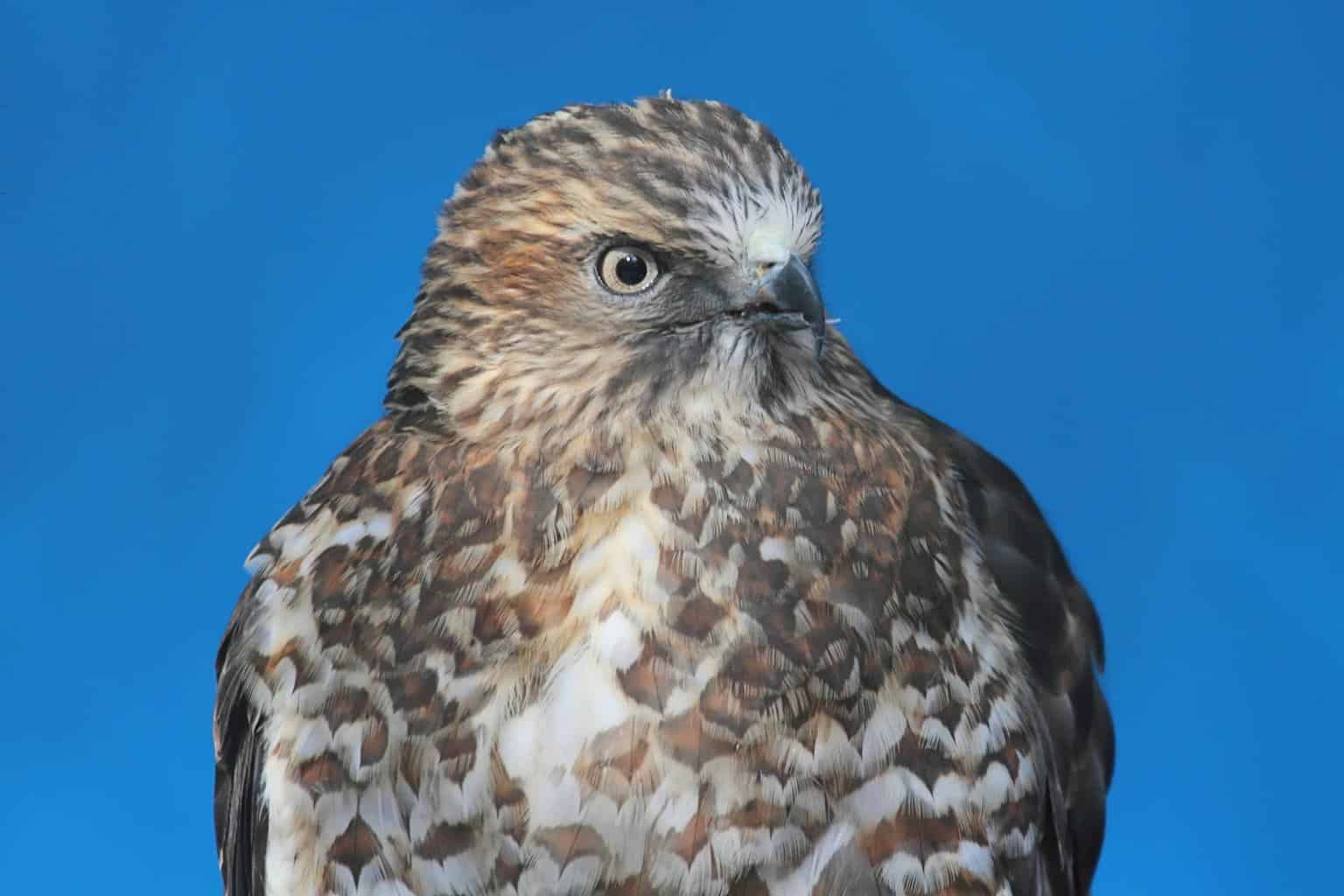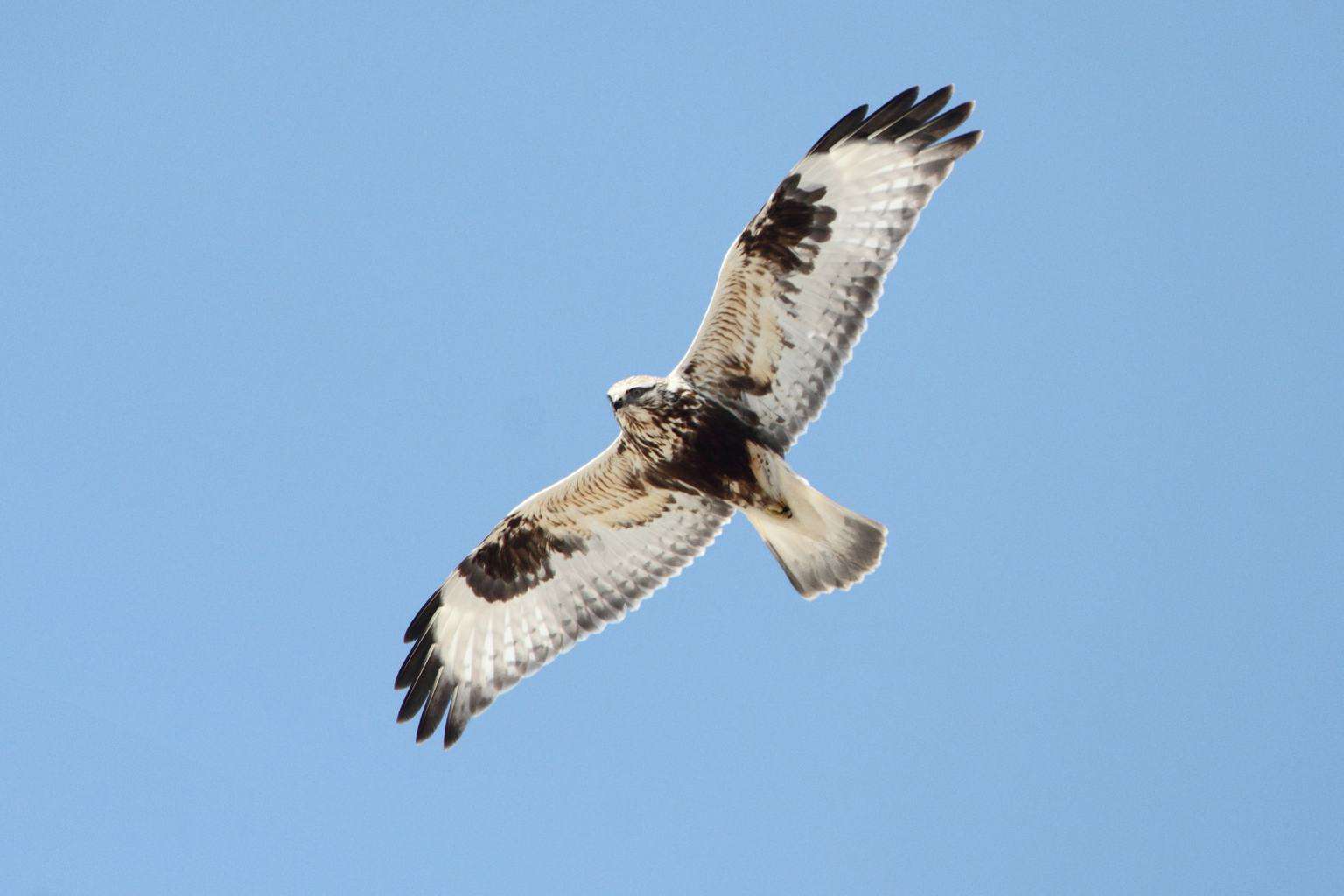From black bears, coyotes, foxes, and bats to alligators, turtles, snakes, and salamanders, you’re in for a wildlife treat in Tennessee! The Volunteer State is home to a rich animal population thanks to its gorgeous and diverse natural landscapes.
But make no mistake, Tennessee’s wildlife species list isn’t just limited to creatures that crawl on the ground or swim in lakes and rivers; the state has a long list of birds to offer, too. To be specific, as of February 2020, there are 423 species of birds included in the official list, which are documented in the U.S. state of Tennessee and accepted by the Tennessee Bird Records Committee (TBRC) of the Tennessee Ornithological Society.
To be even more specific, the state houses nine interesting hawk species, thanks to its abundance of forests, parks, and wildlife refuges.
Sharp-Shinned Hawk

- Scientific Name: Accipiter striatus
- Length: 9.4 – 13.4 inches
- Weight: 3.1 – 7.7 ounces
- Wingspan: 16.9 – 22.1 inches
Sharp-shinned hawks are on the smaller side of the spectrum with long tails and short, rounded wings. Actually, they’re the smallest species of hawks in Tennesse and North America, and their small heads usually don’t project beyond the “wrists” of the wings in flight.
Females of this species tend to be notably larger than males, but all adult sharpies have slaty blue-gray top feathers and narrow, horizontal red-orange streaks on the chest. Immature hawks are brown with vertical bands on white underparts.
Sharp-shinned hawks breed in deep forests, but they prefer forest edges during the non-breeding season. In Tennessee, they nest in large stands of deciduous, coniferous, and mixed pine-hardwood forests as well as pine plantations. In the winter, you’ll often spot them in woodlots, towns, and parks.
Though these birds are small, this is a species of fierce hunters, snatching up their prey — small birds, rodents, lizards, and even large insects — in their sharp talons as soon as it’s time for a meal.
Cooper’s Hawk

- Scientific Name: Accipiter cooperii
- Length: 14.6 – 15.3 inches (males), 16.5 – 17.7 inches (females)
- Weight: 7.8 – 14.5 ounces (males), 11.6-24.0 ounces (females)
- Wingspan: 24.4 – 35.4 inches (males), 29.5 – 35.4 inches (females)
Cooper’s hawk is a medium-sized hawk that’s bigger than the sharp-shinned species and about the size of a crow. This species sports the classic accipiter shape with broad, rounded wings and a very long tail.
The color of their feathers makes them look a bit like sharp-shinned hawks, however, if you compare the two, you’ll notice Cooper’s bird is a larger size. Adults have steely blue-gray top feathers, warm reddish streaks on the chest and belly, as well as thick dark bands on the tail. Juveniles, on the other hand, are brown on top with brown banding on the upper breast, giving them a more hooded look compared to young sharp-shinned hawks’ more scattered streaking.
Cooper’s hawks fly with a “flap-flap-glide” pattern, and in Tennessee, you’ll find them flitting about near the edges of large patches of deciduous, mixed, and coniferous forests, rural woodlots, and wooded suburban areas.
Northern Goshawk

- Scientific Name: Accipiter gentilis
- Length: 20.9 – 25.2 inches
- Weight: 22.3 – 48.1 ounces
- Wingspan: 40.5 – 46.1 inches
Northern goshawks aren’t just large hawks; they’re the largest of the accipiters! Females of this species can get as large as a red-tailed hawk while males are just a bit bigger than a female Cooper’s hawk.
These hawks feature broad, rounded wings and long tails. Adults have dark slate gray top feathers with pale gray barred underparts. Their heads are dark with a wide white stripe above the eye. Immature birds of this species are brown and streaky, and they also have narrow dark bands in the tail. Northern goshawks are stealthy predators that fly with a few slow wingbeats coupled with short glides.
They live primarily in coniferous forests, but they may reside in the deciduous hardwood forests of Tennessee, too.
Red-Shouldered Hawk

-
Scientific Name: Buteo lineatus
-
Length: 16.9 – 24.0 inches
-
Weight: 17.1 – 27.3 ounces
-
Wingspan: 37.0 – 43.7 inches
Red-shouldered hawks are a lot smaller than both the red-tailed and broad-winged species. The medium-size birds sport broad, rounded wings and medium-length tails and display a distinctive reaching posture while in flight.
Adults are colorful with dark-and-white checkered wings, reddish barring on the chest, and a black tail with narrow white bands. The juvenile, on the other hand, has a body that is mostly brown with white, streaked underparts.
Red-shouldered hawks generate a unique whistled “kee-rah” sound, and they hunt small mammals, amphibians, and reptiles. In Tennessee, you’ll find this species of hawks living in mature, mixed moist deciduous-coniferous woodlands (especially bottomland hardwood), riparian areas, and flooded swamps.
Broad-Winged Hawk

-
Scientific Name: Buteo platypterus
-
Length: 13.4 – 17.3 inches
-
Weight: 9.3 – 19.8 ounces
-
Wingspan: 31.9 – 39.4 inches
Broad-winged hawks are small raptors with bulky bodies, large heads, and short squared tails. Adults have reddish-brown heads and barred underparts with broad black and white streaks on the tail. Juvenile individuals are a lighter shade of brown with wide streaking on the sides of their breasts and narrow bands on their tails.
Broad-winged hawks typically perch underneath the forest canopy to prey on small animals like voles, squirrels, frogs, snakes, and lizards. As you walk through a deciduous or mixed forest in Tennessee, see if you can hear the broad-winged bird; its call is a piercing whistle on a single pitch.
Swainson’s Hawk

-
Scientific Name: Buteo swainsoni
-
Length: 18.9 – 22.1 inches
-
Weight: 24.4 – 48.2 ounces
-
Wingspan: 46 – 54 inches
Birds of the Swainson’s hawk species are large, even larger than Cooper’s hawk, and have broad wings and short tails. However, their winders and longer and slimmer, typically held in a shallow V-shape when flying. These hawks vary in appearance, but most of them have light-colored feathers on their bellies, a dark or reddish-brown breast, and brown or gray upperparts. Their underwings carry distinctive white linings that contrast with the black flight feathers.
Swainson’s hawks are social raptors, frequently found in groups outside the breeding season. They spend summers in the wide-open spaces of the American West, but occasionally, you’ll see these beautiful buteo birds flapping their wings across the Tennessee sky.
Red-Tailed Hawk

-
Scientific Name: Buteo jamaicensis
-
Length: 17.7 – 22.1 inches (males), 19.7 – 25.6 inches (females)
-
Weight: 24.3 – 45.9 ounces (males), 31.8 – 51.5 ounces (females)
-
Wingspan: 44.9 – 52.4 inches
The red-tailed hawk is the second-largest buteo hawk in North America, ranking only after the ferruginous hawk. These large harks have the typical buteo proportions: very broad, rounded wings and a short, wide tail. Most of these birds have rich brown tops, pale underparts, and streaked bellies. Adults have cinnamon-red tails, but immature birds of this species are brown and banded.
These birds occur in two color morphs: dark morph birds are chocolate-brown with a rusty red tail, while the rufous morph birds have reddish-brown feathers on their chests and dark bellies.
You’re most likely to find red-tailed hawks in open areas with scattered elevated perches, including near agricultural areas, pastures, parkland, and open woodland. There’s also a high chance you’ll see them perched on telephone poles and trees along roadsides not just in Tennessee, but across the United States.
Rough-Legged Hawk

-
Scientific Name: Buteo lagopus
-
Length: 18.5 – 20.5 inches
-
Weight: 25.2 – 49.4 ounces
-
Wingspan: 52.0 – 54.3 inches
Though they’re a little smaller and less bulky than the red-tailed species above, rough-legged hawks are still fairly large birds with broad, long wings. Compared to other buteos, their tails are longer, and their wingtips are often slightly swept back from the wrist, giving the wing an M-shape.
These dark-brown hawks have bold patterns and occur in both light and dark morphs. Light morphs feature pale underwings with dark patches, but dark morphs are mostly dark brown. Their most distinguishing feature, however, is the feathers that grow all the way down their legs, a characteristic only shared by two other North American raptor species.
Their fully-feathered legs keep these hawks warm as they breed in the arctic, and in the winter, you’ll find them migrating to open habitats like fields, prairies, and deserts in the United States.
Ferruginous Hawk

-
Scientific Name: Buteo regalis
-
Length: 22.1 – 27.2 inches
-
Weight: 34.5 – 73.2 ounces
-
Wingspan: 52.4 – 55.9 inches
The ferruginous hawk is larger than a Swainson’s hawk but smaller than a golden eagle, and it has a large head and relatively long wings that have a pointier tip than most other buteos.
Like many other species of hawks, the ferruginous bird occurs in two color morphs. The light morph features strikingly white underparts and rusty legs that display a V-shape when the bird is soaring. It also has rusty upperparts and a pale head. Immature light morphs show different amounts of brown spotting on the belly and legs.
Individuals of the rarer dark-morph, on the other hand, are mostly covered in deep chocolate-colored feathers.
Ferruginous hawks fly with their wings somewhat raised but with the wingtips nearly flat. They turn into the wind and hover, or kite, in place while hunting. They usually also hunt on the ground.
You’ll find these hawks living in open spaces including grasslands, prairie, sagebrush steppe, scrubland, and pinyon-juniper woodland edges.
Wrap Up
With so many fascinating hawk species to see in Tennessee, it should come as no surprise that it’s a hot spot for any avid birdwatcher. The next time you find yourself on an adventure in the southeastern state, be sure you’ve got a pair of binoculars handy!

